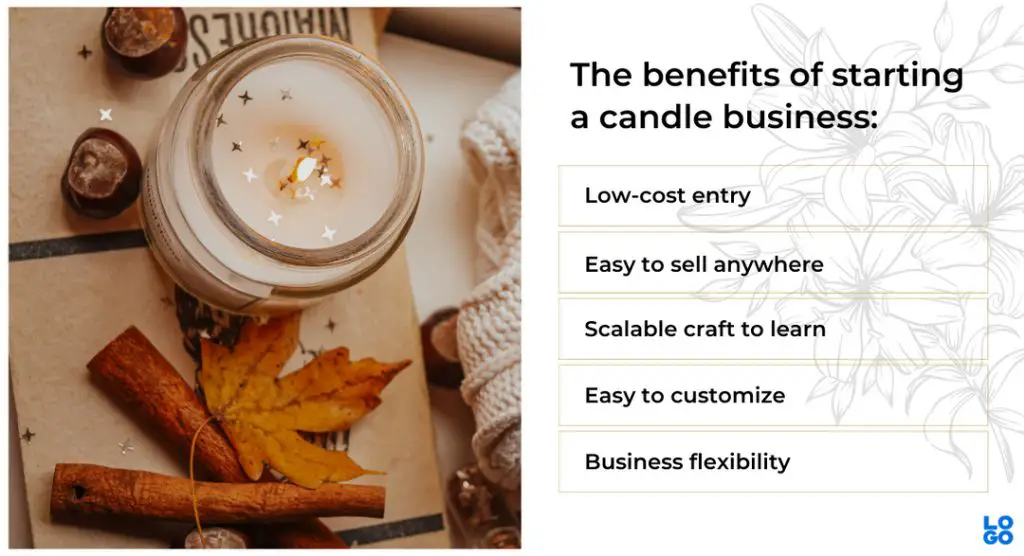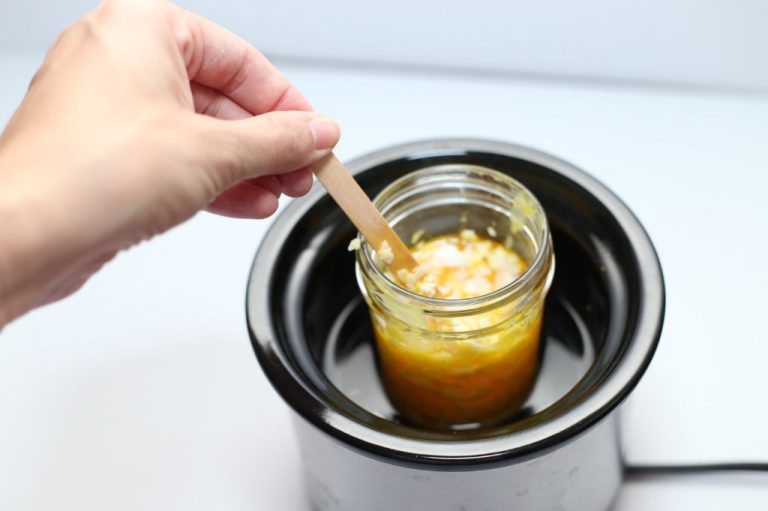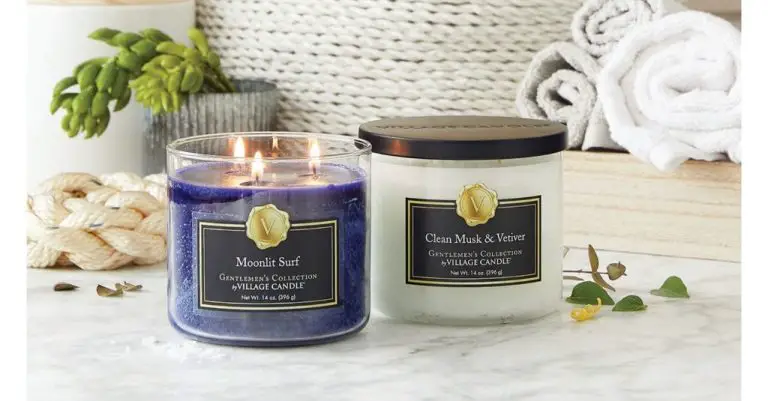What Should I Call My Candle?
The Importance of a Great Name
A name can make or break a candle brand. It needs to reflect the scent, vibe, and personality. The name is the first impression and can determine sales. According to Wix, your candle name sets customer expectations and helps buyers decide if they want to purchase it. It should evoke the sensory experience and elegance of your product. As mentioned in Shopify’s candle business name generator, your brand name is key for standing out in a crowded market.
Describe the Candle
When naming your candle, it’s important to start by thinking about the details of the product itself. Consider the scent first – is it floral, fruity, spicy? Citrus scents like lemon or orange are popular, as are lavender and vanilla. Describe the exact scent profile and any specialty ingredients. For example, a “Lavender Vanilla” candle could contain soothing French lavender essential oil blended with creamy Madagascar vanilla.
Next, what color is the wax when burning? Soft colors like ivory, light pink or pale blue complement lighter fragrances. Bolder reds, greens and browns match stronger scents. The color of the wax, container and label should coordinate for a cohesive look. For shape, standard options are pillars, tins, and jars – or get creative with unique molds. How large is the candle? Small votives burn quicker while pillars can last over 50 hours.

Also consider your target consumer and where you plan to sell. Is it a gift for women, men, teens, or anyone? Mass market vs. high-end boutique? Knowing the price point and audience will guide naming. For example, a custom-poured artisanal candle in a one-of-a-kind vessel, selling for $30 at gift shops, would warrant an elevated name like “Blossom Street Botanicals”. In contrast, a $6 brightly-packaged candle meant for teenagers may be called something simple like “Sunshine Days”.
Thinking through these details first will inform creative and descriptive name possibilities that capture the essence of your candle’s look, scent and brand.
Conduct Market Research
Researching competitor candle names and branding is an important step when naming your candle company. As explained in this YouTube video, you’ll want to see what names and branding styles seem overdone or saturated in the market, as well as identify any gaps or opportunities to stand out.
For example, according to this article on choosing a candle business name, looking at successful competitors can provide inspiration for your own branding. Peruse candle company names to get a feel for naming conventions that work well in the industry.
As suggested in this candle company naming guide, research enables you to see what types of names and messaging your competitors are using, so you can determine areas of differentiation and opportunity for your own branding.
Choose Meaningful Words
Incorporate words that connect to the scent, mood, or purpose of the candle. Evocative, descriptive words work well. For example, if your candle has an ocean breeze scent, you could include words like “sea,” “salty,” or “breeze” in the name. If it’s meant to promote relaxation, consider words like “calm,” “serene,” or “tranquil.” According to Armatage Candle Company, meaningful words that describe the scent and experience of burning the candle tend to make for great names.
You want customers to immediately understand what the candle is meant to convey just from reading the name. Using words that connect to the scent profile or intention behind the candle makes it easier for buyers to identify whether it’s the right candle for them. So take the time to brainstorm descriptive, evocative words and phrases to incorporate into your candle name.
Consider Allusions
References to mythology, literature, history, or pop culture can make clever, unexpected names. For example, candles with names drawn from Greek mythology like Athena, Apollo, or Aphrodite instantly create an association with those powerful gods and goddesses. Literary allusions to authors like Austen, Steinbeck, or Hemingway also evoke certain imagery from their famous works. You could even reference pop culture with names inspired by TV shows, movies, music, or celebrities that your target buyers connect with.
As you brainstorm allusions, focus on choosing names that are distinctive yet understandable. Obscure references that most people won’t recognize can come across as confusing. But a name referencing Harry Potter, Taylor Swift, or Oprah feels fun and approachable. Just be sure to avoid copyrighted terms and check trademark databases to confirm no one else already uses that name (https://www.uspto.gov/trademarks/search).
Test Phrase Combinations
After generating ideas for meaningful words, it’s time to combine and test different phrases. Play around with different word combinations to find one that sounds great. Try short names, longer names, alliteration, rhyming words, and more. Say the names out loud to hear how they flow. An ideal candle name often uses only 2-3 words. Fiddle around with the sequence of words and break apart compound terms until you find the perfect match of meaning and sound.
As you test combinations, keep elements of branding in mind as well. How does each potential name fit with your overall brand identity and other products? Choose something aligned with your brand story and target audience. Write down your top options and ask others their opinions.
According to candle company Gold Canyon, testing is crucial: “Using words that evoke a positive feeling or remind someone of a fond memory are incredibly powerful tools when naming your candle scents.” Don’t be afraid to experiment until you discover the perfect scent name.
Sources:
https://goldcanyon.com/blog/how-to-name-your-candle-scents
Focus on Sound and Cadence
The name you choose for your candle should sound pleasing and roll off the tongue. Using techniques like rhymes, alliteration, and rhythms can help the name be more memorable and aesthetically appealing. According to this article, fragrance notes are important for a candle’s first impression, so the name should complement the smell. A rhythmic or lyrical name pairs nicely with the sensory experience of burning a scented candle.
Some examples of candles with names focused on cadence include Yankee Candle’s “Sparkling Cinnamon” and Bath & Body Works’ “Fresh Balsam.” These names use alliteration to create a smooth, pleasant sound. You could also opt for names with rhymes like “Berry Merry” or “Vanilla Thrill-a.” Play around with different word combinations while keeping in mind how they sound and flow together.
The auditory experience of your candle name is just as important as the visuals and actual scent. A name with crisp phonetics can pique customer interest and help your candle brand stand out.
Run Trademark Searches
An important step when naming your candle is to search trademark databases to ensure your proposed name is unique and not already in use. According to https://soycandlemakingtime.com/candle-name-trademarks/, registered trademarks have an ® symbol next to the name, and you cannot use those on your products without permission. Services like the USPTO’s TESS database allow you to search for existing trademarks. You want to avoid choosing a name that is already trademarked, as legal issues could arise if you sell candles using that name without permission.
Searching trademark databases helps identify names that are already in use for similar products. This allows you to tweak your name to make it unique. While common candle style names like “Tart Candle” may be trademarked, you can put your own spin on the name to differentiate it. The goal is finding an original, creative name not already trademarked in your product category.
Get Feedback
Before settling on a final name, it’s important to get feedback from others, especially your target customers. Send out surveys or hold focus groups to get input on your top name choices from the people you hope will buy the candle. Getting opinions from a diverse set of potential customers can reveal preferences you may not have considered.
You may also want to consult with candle experts, marketers, brand strategists, and naming professionals. They can evaluate your options through the lens of their expertise. For example, a marketer can advise if a name lends itself well to branding and packaging. Meanwhile, an expert candle maker can assess if the name matches the scent and look of the actual candle. Their specialized viewpoints can help you make a well-rounded decision.
The feedback process both tests the appeal of names under consideration and uncovers new possibilities you may have overlooked. Make sure to document all the suggestions and input you receive. Then review and compare to select your final candle name. Checking in with others ensures you choose a name with broad appeal that resonates with your target audience.
Confirm Availability
Before settling on a name for your candle business, it’s crucial to double check that the URL, social media handles, and overall brand name are available. As this guide recommends, confirm your desired business name’s availability by checking your secretary of state’s website. This will tell you if the name is already registered by another business in your state.
You’ll also want to make sure your preferred domain name (typically yourbusinessname.com) is available for purchase. Search domain registrars like GoDaddy to see if the .com URL is taken. Additionally, check if the name is available on key social media platforms like Instagram, Facebook, and Twitter. You don’t want to have to compromise on a name just because the handle is taken.
By thoroughly vetting the availability of your chosen candle brand name across websites, domains, and social media, you can confirm it’s viable as a unique brand you can build an identity around.





